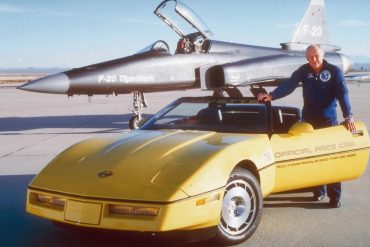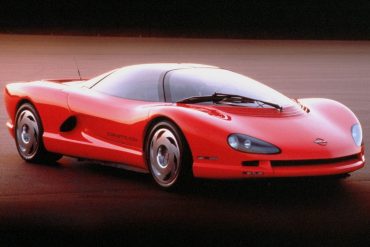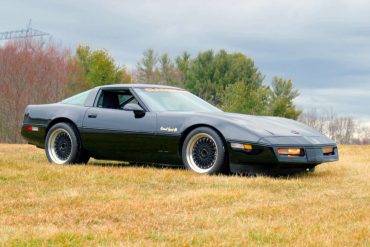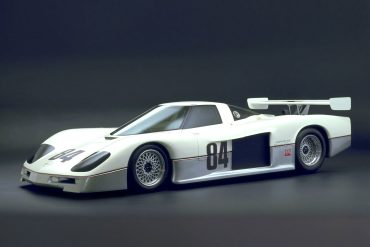The big news for 1986 was that a Corvette would pace the Indy 500 for the second time. Retired General Chuck Yeager was enjoying celebrity status as a result of the book and movie, “The Right Stuff.” But Chevrolet was still smarting from the heavy criticism over the ‘78 Corvette Pace Car debacle and decided that all 1986 Corvette convertibles were designated as “Pace Car Replica”.
The 1986 Corvette Indy Prototype was developed beyond clay modeling to the point of a fully-functioning, drivable car, though it was clearly understood that this car would never evolve beyond the prototype stage. Like the clay mock-up before it, development of the mid-engine Indy prototype began in 1985, pulling design cues from its predecessor.
When Dick Guldstrand introduced the GS80 series in 1986, the car was targeted specifically at Pro-Solo and autocross enthusiasts. He knew all about the needs of these groups, as he was a longtime provider of performance upgrades for the C3 and a direct supporter of a small team of racers from the Western Council of Corvette Clubs. Up to this point, Dick had basically been a tuner. With the intro of the GS80 he was venturing into the realm of small-volume manufacturing.
A Corvette in name only, the Corvette GTP (Grand Touring Prototype) was one of the fastest and most exotic race cars ever to wear a red Bowtie. Based on an English Lola T600 chassis and powered by an all-American turbocharged Chevy V6, the mid-engined racer was a rocketship. At full boost, the Corvette GTP's 3.4-liter (209ci) V6 pumped out more than 1,000 horsepower.






